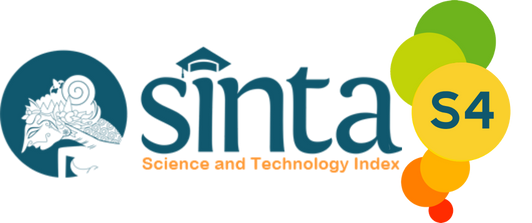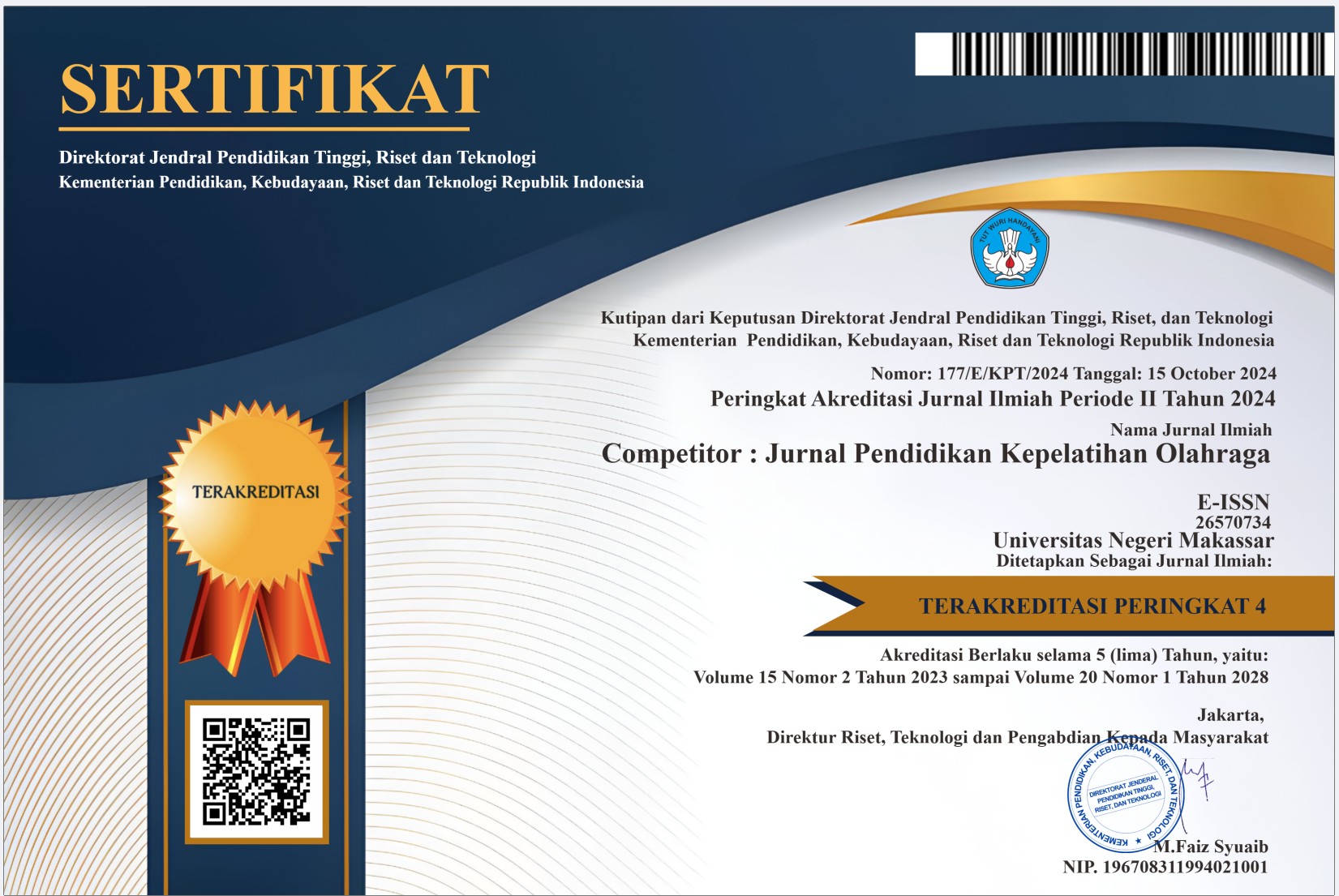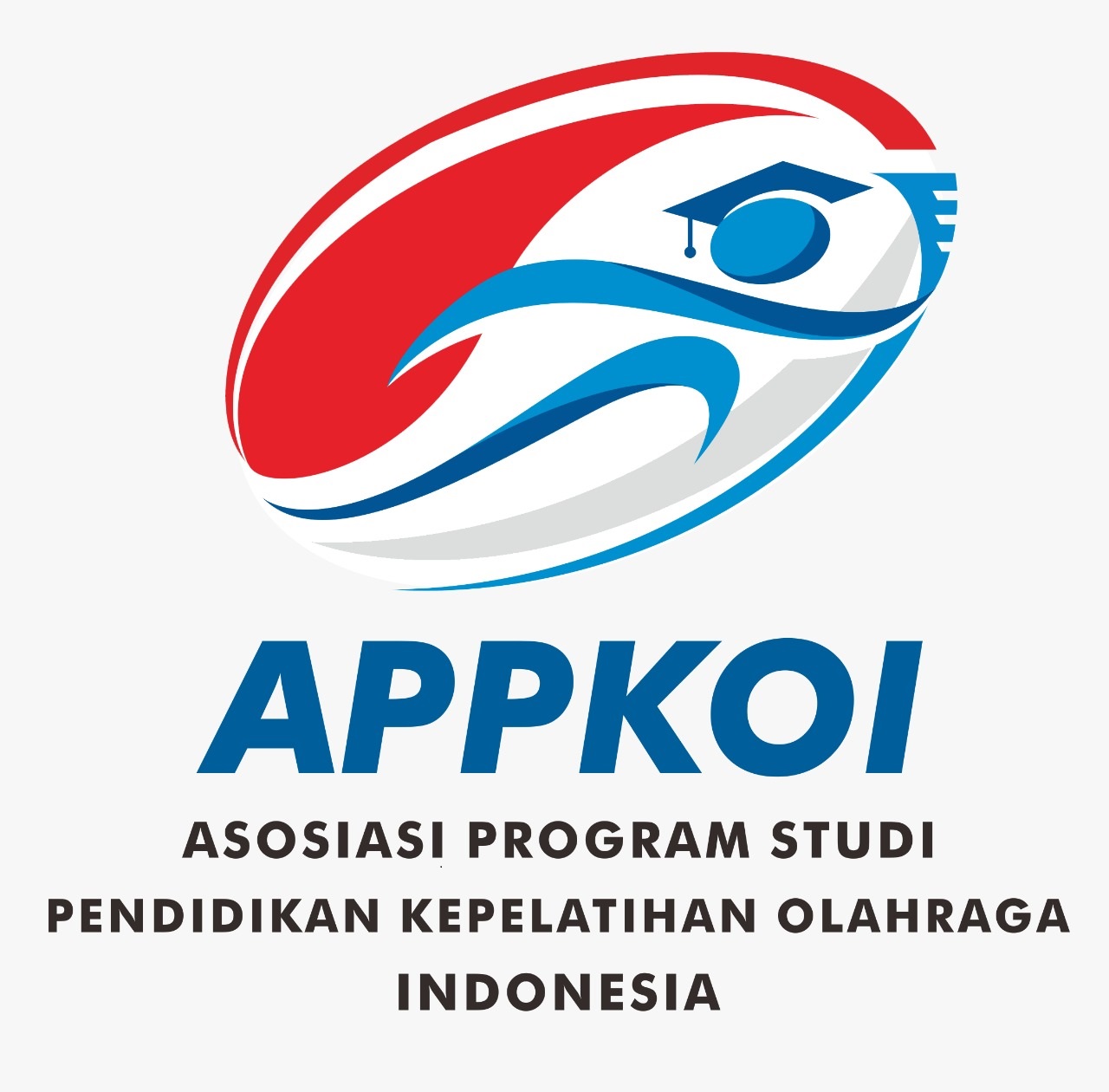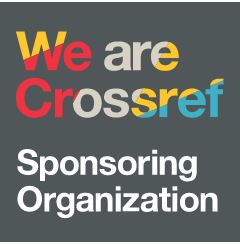The Effect of the Elementary Training Model on the Conventional Training Model On Kata Performance of South Sulawesi Inkanas Athletes
DOI:
https://doi.org/10.26858/cjpko.v17i1.74054Keywords:
Kata Performance, Elementary Training Model, Karate, Athlete Development, Experimental Study.Abstract
This study aimed to compare the effects of the elementary training model and the conventional training model on kata performance among Inkanas athletes in South Sulawesi. A total of 60 karate athletes aged 13–18 years were selected using purposive sampling and divided equally into two groups: experimental (elementary model) and control (conventional model). The research applied a quasi-experimental method with a pretest-posttest control group design. Kata performance was assessed using the World Karate Federation (WKF) standardized criteria. The results indicated significant improvements in both groups. The experimental group’s mean score increased from 6.85 (SD = 0.75) in the pretest to 8.95 (SD = 0.62) in the posttest (p < 0.001), while the control group improved from 6.89 (SD = 0.71) to 7.55 (SD = 0.81) (p < 0.001). An independent samples t-test showed a statistically significant difference in post-test scores between the two groups (t = 6.789, p < 0.001). The findings demonstrate that the elementary training model provides superior outcomes in improving kata performance compared to conventional methods. This research suggests that incorporating structured, foundational training models can enhance skill acquisition and performance in martial arts, particularly in kata. Coaches are encouraged to adopt this approach to maximize athlete development.References
Aisyah, S., et al. (2020). The Effect of Training Method and Educability on Karate-Kata Skill. Tegar: Jurnal Pendidikan Jasmani dan Olahraga, 3(2), 123-130. https://ejournal.upi.edu/index.php/tegar/article/view/26708
Aisyah, S., Muhtar, T., & Yudiana, Y. (2020). The Effect of Training Method and Educability on Karate-Kata Skill. Tegar: Jurnal Pendidikan Jasmani dan Olahraga, 3(2), 123-130. https://ejournal.upi.edu/index.php/tegar/article/view/26708
Augustovicova, D., et al. (2025). Kata Selection Trends in Top-Level Para-Karate Competitions: A Multi-Championship Study. BMC Sports Science, Medicine and Rehabilitation, 17, 33. https://doi.org/10.1186/s13102-025-01081-x
Bhattacharya, P., et al. (2022). Effect of Karate on Neurocognitive Physiology: A Focused Review. Journal of Exercise Science & Fitness, 20(2), 123-130. https://doi.org/10.1016/j.jesf.2022.06.001
Bhattacharya, P., Chatterjee, S., & Mondal, S. (2022). Effect of Karate on Neurocognitive Physiology: A Focused Review. Journal of Exercise Science & Fitness, 20(2), 123-130. https://doi.org/10.1016/j.jesf.2022.06.001
García-De Frutos, J. M., et al. (2025). Specific Physical and Nutritional Preparation of a Professional Kata Karate Athlete: A Case Study with a Bronze Medallist from the Pan American Games. Nutrients, 17(2), 306. https://doi.org/10.3390/nu17020306
Gaweł, E., & Zwierzchowska, A. (2024). The Acute and Long-Term Effects of Olympic Karate Kata Training on Structural and Functional Changes in the Body Posture of Polish National Team Athletes. Sports, 12(2), 55. https://doi.org/10.3390/sports12020055
Gökdere, F., et al. (2025). Integrating Kata Training into School Education: Effects on Sustained Attention and Cognitive Performance in 8–9-Year-Old Children. Children, 12(2), 208. https://doi.org/10.3390/children12020208
Hadi, H., & Yudhistira, D. (2023). High-Intensity Interval Training Method in Karate Athletes: Can It Improve Power, Agility, and Endurance in the Kumite Category? Journal Sport Area, 8(1), 43-51. https://doi.org/10.25299/sportarea.2023.vol8(1).10656
Hardinata, A., et al. (2023). Physical Test Instrument: A Development Study for Junior Karateka in Kata Category. Journal of Physical Education and Sport, 23(3), 123-130. https://doi.org/10.7752/jpes.2023.03016
Ibrahim, F., & Sunaryadi, Y. (2024). Effects of Imagery Training on Concentration and Performance of Kata Karate Athletes by Gender. Journal of Physical Education Health and Sport, 11(2), 85-89. https://doi.org/10.15294/jpehs.v11i2.18768
Nishijima, S., & Takai, A. (2024). Comparison of Spatiotemporal Characteristics of Eye Movements in Non-Experts and the Skill Transfer Effects of Gaze Guidance and Annotation Guidance. arXiv preprint arXiv:2412.17296. https://arxiv.org/abs/2412.17296
Parsamajd, F., et al. (2024). Karate Kata Training: A Promising Intervention for Behavioral Problems in Elementary School Children. Journal of Experimental Child Psychology, 248, 106058. https://doi.org/10.1016/j.jecp.2024.106058
Younesi, M., et al. (2022). The Effect of Karate Exercises (Kata and Kihun) on Children's Dynamic Balance. International Journal of Motor Control and Learning, 4(3), 21-24. https://doi.org/10.52547/ijmcl.4.3.21
Downloads
Published
Issue
Section
License
Copyright (c) 2025 Rahyuddin Jide Same, Syahrul Zaum (Author)

This work is licensed under a Creative Commons Attribution 4.0 International License.





















